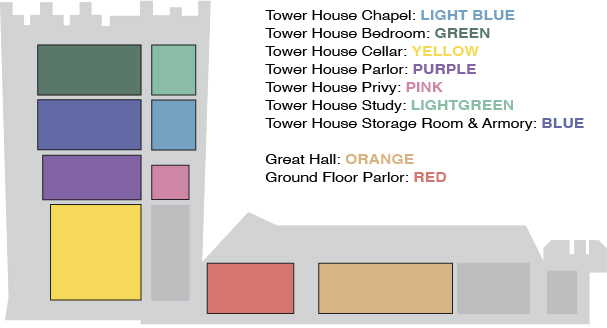Exploring English Renaissance Poetry in a Castle Setting
An Introduction to the Pastoral Genre for High-School Students
Introduction
This module, written by Sara Painter, is designed to introduce advanced high-school students to a key literary genre, the pastoral, as used by English writers during the Renaissance. One of the main practitioners of the pastoral was the writer and colonial administrator Edmund Spenser (1554?-1599). Spenser lived with his second wife, Elizabeth Boyle, in the countryside at Kilcolman Castle, County Cork, Ireland, in the late 1580s and early 1590s. One of his poems featured here, "Colin Clouts Come Home Againe" (1595), is set among shepherds around Kilcolman and written in the pastoral mode. This module also explores pastoral themes in a famous pair of poems by Christopher Marlowe and Sir Walter Raleigh; the latter was Spenser's patron and fellow colonial planter near Kilcolman as well as being a famous courtier and adventurer.
Spenser also wrote a sequence of eighty-nine sonnets to Boyle. These sonnets, known as the Amoretti, were published in 1595 in London alongside Spenser’s wedding poem to Boyle, known as "Epithalamion".
The module refers to examples of pastoral in the visual arts of the Renaissance and later periods. It functions by situating the poetry and art inside a digital model of Kilcolman Castle and relating terms and passages to it. The module is self-led.
A second module, "Spenser's Love Poetry in an Irish Context", written by Thomas Herron, was also developed as part of the "Castle to Classrooms" project. It focuses on Spenser's "Amoretti and Epithalamion" and can be found linked from the Teaching Resources homepage.
A third module (under construction) by Sara Painter is a scavenger hunt wherein students, working in pairs, find lines from a Spenserian sonnet and assemble them in correct order, based on the poem’s internal meaning and rhyme scheme.
Directions
When touring the castle compound on a computer, click on the overhead signs to transport yourself to the indicated locations. If wearing a VR headset, hold the dot over the sign to activate its function.
The following icon represents a teaching station:

Click or hold on to activate.
